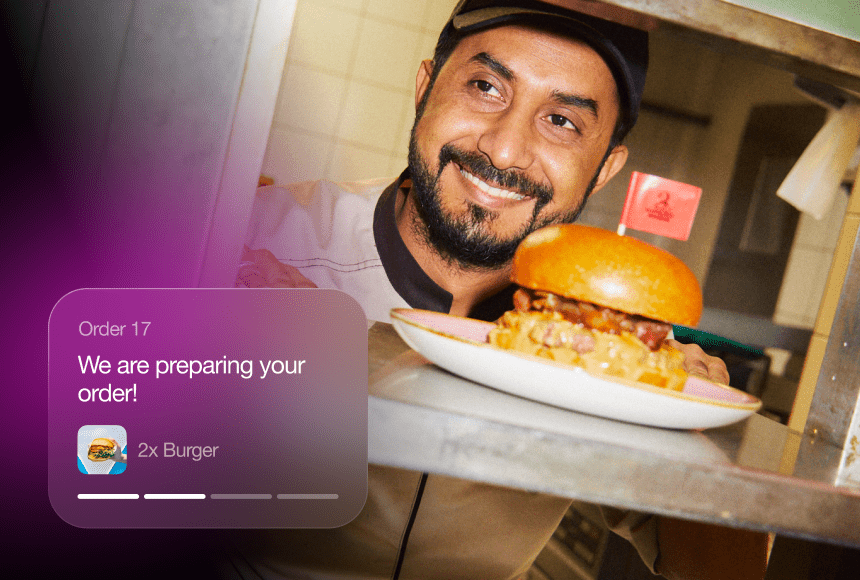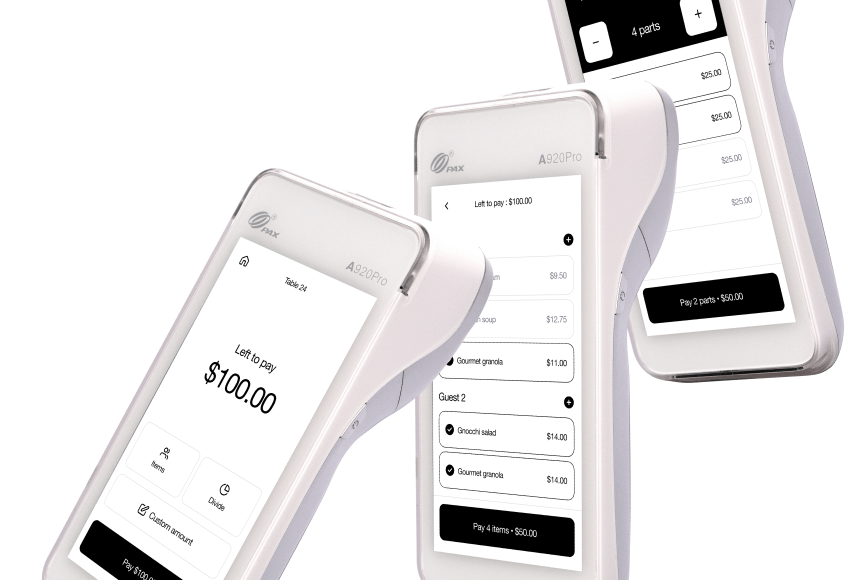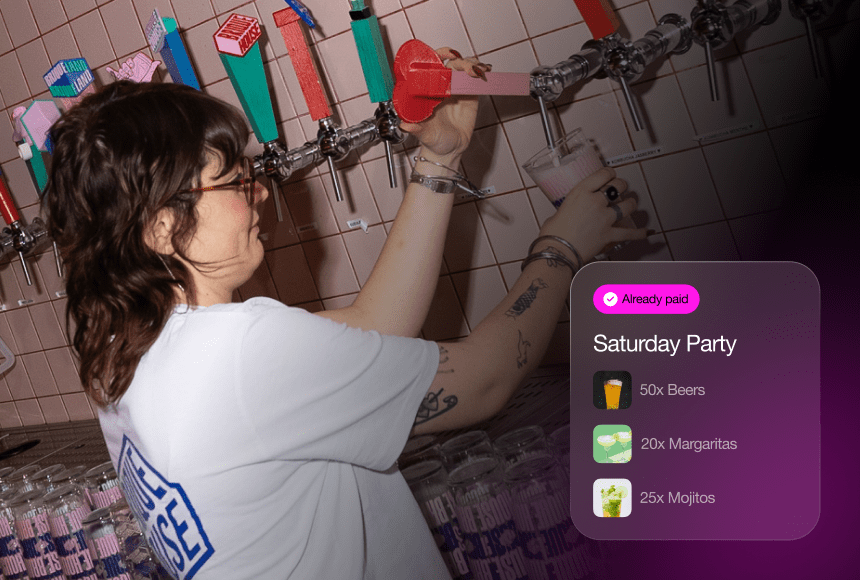
How QR Code Ordering Is Redefining Restaurant Experiences in 2025
QR Codes: No Longer a Novelty
Not too long ago, many diners raised an eyebrow at the prospect of scanning a black-and-white square to view a menu or pay a tab. Fast-forward to 2025, and QR code ordering has become so common that paper menus are on the verge of looking antiquated. As smartphones continue to dominate and contactless solutions increasingly gain traction, QR codes have evolved from an experimental fad into a hospitality essential.
The speed of this transformation might seem surprising at first, but consider that the restaurant industry has always innovated to meet changing consumer demands—from fast food in the 1950s to online delivery platforms in the 2010s. In the 2020s, the marriage of digital technology and convenience has been taken to a new level, with QR code systems at the heart of it all. As a result, restaurants big and small are finding creative ways to deploy QR codes throughout their operations, enhancing customer experiences and streamlining service.
The Post-Pandemic Shift Driving Contactless Ordering
One key factor behind QR code popularity is the way restaurants adapted to pandemic-era challenges—and never looked back. While the health crisis accelerated the adoption of contactless menus, payment methods, and curbside pickup, many restaurants discovered that the convenience and cost-effectiveness of these changes were too beneficial to abandon. According to a 2023 report from the National Restaurant Association, 75% of U.S. operators now see contactless ordering or digital payment solutions as “essential” to daily operations.
In 2025, diners have grown to expect the freedom of scanning a code, reviewing a dynamic menu, and placing an order without waiting for a server’s attention—especially in bustling environments. As a result, QR-based ordering has become more sophisticated, linking seamlessly with loyalty programs, personalized recommendations, and real-time inventory updates. Post-pandemic, these digital solutions are no longer viewed as emergency fixes but as the new normal.
Personalization at the Table: Menus that Adapt
An exciting trend shaping QR code ordering is the rise of personalized digital menus. With integrated systems, restaurants can tailor the items each guest sees based on factors like dietary restrictions, past orders, and even time of day. When a diner scans the QR code:
- Recommendations Appear: The system might suggest dishes they’ve tried and loved in the past or highlight new options that match their preferences.
- Automated Upselling: If they typically order a glass of Pinot Noir, the menu might feature a recommended pairing for their meal.
- Adaptive Pricing: In some establishments, special offers or dynamic pricing appear for early diners or for happy-hour loyalists.
This level of personalization makes each customer feel like the restaurant truly “knows” them—a potent factor in building loyalty. Beyond that, it also helps operators optimize revenue by spotlighting promotions that resonate most with specific demographics. Instead of a one-size-fits-all menu, 2025’s QR code ordering systems are as flexible as a well-trained chef, customizing the diner’s experience on the fly.
Blending QR Codes with Tableside Devices
Another emerging approach is the synergy between QR codes and dedicated tableside devices or digital kiosks. While the smartphone remains the main point of interaction, some restaurants place small, tablet-like displays on each table to enhance the ordering process. Diners can:
- Scan a Code for Ordering: Quickly place orders that show up on both their phone and the table display.
- Track Order Progress: Watch as their meal flows through the kitchen in real-time, or receive alerts about estimated prep times.
- Access Extras: Request condiments, napkins, or a server’s assistance with a simple tap, minimizing the need to flag down busy staff.
By 2025, this hybrid approach is earning fans in high-traffic venues like airport restaurants or sports bars, where speedy service is a top priority. With minimal staff intervention required for standard tasks (like checking if the table needs more water), servers can devote more time to genuine hospitality, such as chatting about specials or ensuring dietary requirements are met.
Streamlined Payment at the Table
Ask any busy diner what their biggest pain point is, and many will mention the drawn-out process of getting the check, paying, and waiting for the card to return. QR code ordering solutions address this by letting guests settle the bill at their convenience—directly on their phone. By scanning the same or a separate QR code:
- Review the Bill: Ditch confusion over itemized charges. Diners see every line of their tab in real-time, giving them more confidence in the final total.
- Split Payments Seamlessly: Large groups no longer need complicated math to split the bill. Everyone scans the code and pays their portion with a few taps.
- Leave Tips Instantly: Tipping becomes simpler, with suggested amounts or custom fields. Gratuities often increase when diners can tip quickly, capitalizing on the positive post-meal feeling.
- Immediate Feedback: Once the payment is complete, platforms like sunday prompt diners to rate their experience or leave a review on Google. This instant engagement is driving more genuine, higher-volume feedback, further enhancing the restaurant’s online reputation.
In 2025, a fast, frictionless payment process has become a critical component of the overall dining experience. Diners value the time saved, while staff enjoy less transactional work and more time to ensure guests feel truly taken care of.
QR Codes Beyond the Dining Room
While in-restaurant use is the most obvious application, QR codes are popping up in other settings, too, extending the contactless experience in unexpected ways. Some notable examples include:
- Takeout and Curbside Pickup:Diners scanning a code on a website or marketing flyer can place an order instantly, see real-time wait times, and even pay in advance. When they arrive for pickup, they simply confirm via a second code or push notification.
- Event Catering:QR codes on table cards at catered events let attendees browse tailored menus, request special dietary accommodations, or learn more about the dishes being served—perfect for large gatherings where staff can’t individually attend to each guest.
- Self-Service Ordering:Some quick-service restaurants are installing QR codes on each table in their outdoor seating areas or pick-up windows. This allows fast, no-fuss ordering for people on the go, reducing lines and wait times inside.
What unites these varied use cases is the focus on convenience, transparency, and efficiency. By 2025, more and more customers expect the simplicity of scanning a code and completing any necessary transaction on their smartphone, no matter the setting.
Data-Driven Insights for Operators
One of the most significant yet often overlooked perks of QR code ordering is the data it collects. Because each scan, order, and payment passes through a digital system, restaurants can dive into detailed analytics:
- Top-Selling Items: Spot immediate trends and adjust inventory or menu offerings in real time.
- Order Timing: Pinpoint peak hours or days, enabling better staff scheduling and reduced labor costs.
- Customer Preferences: Track popular modifications—like extra sauce or gluten-free requests—to inform new menu creations.
- Repeat Guest Metrics: Identify frequent diners and reward their loyalty with targeted promotions.
Armed with these insights, operators can make data-backed decisions faster than ever before. Instead of relying on guesswork, restaurants can respond nimbly to shifts in consumer behavior—promoting a limited-time special if it’s flying off the shelves, or tweaking portion sizes to optimize profitability. It’s a level of adaptability that was nearly impossible when restaurants primarily relied on face-to-face ordering and printed receipts.
Enhanced Guest Experience and Upselling Opportunities
QR code ordering isn’t just about speed and convenience; it also paves the way for subtle upselling and cross-selling in a friendly, non-intrusive manner. When guests scroll through a digital menu:
- Recommended Add-Ons: Suggest pairings like a chocolate mousse with a certain red wine or a side dish upgrade for an extra $2.
- Limited-Time Deals: Advertise exclusive “digital only” offers—like a free dessert when ordering two entrées—to boost average ticket size.
- Visual Temptations: Mouthwatering images and short descriptions can entice diners to explore beyond their usual choices.
Because the suggestions appear naturally during the ordering process, guests don’t feel pressured. In fact, many appreciate the curated recommendations and the ability to discover new items they might not otherwise have noticed. This shift to an intuitive, digitally-driven approach can have a direct impact on revenue, giving restaurants a low-cost way to scale up sales while keeping diners happy.
Challenges and Considerations
Despite its numerous advantages, implementing QR code ordering in 2025 still presents certain challenges:
- Technology Gaps: Not everyone is tech-savvy or comfortable navigating digital menus. Some guests, especially older demographics, may feel intimidated by QR codes.
- Device Compatibility: While most modern smartphones easily handle QR scanning, there can be hiccups with older phone models or issues in areas with poor internet connectivity.
- Staff Training: Transitioning from traditional methods requires thorough training. Servers need to understand the system to answer questions and troubleshoot potential glitches.
- Security Concerns: Cybersecurity threats evolve, and any system handling financial transactions must prioritize robust data protection and encryption.
Forward-thinking restaurants address these issues by offering clear, accessible instructions (sometimes printed right on the table), maintaining a limited supply of traditional menus for those who prefer them, and deploying support staff to guide unfamiliar users. A successful QR code ordering strategy acknowledges these hurdles and incorporates inclusive, user-friendly solutions.
Integration with Loyalty and Feedback Loops
A notable development in 2025 is the seamless integration of QR code ordering with loyalty programs and feedback mechanisms. Many restaurants link each transaction to a diner’s loyalty profile, automatically accumulating points with every scan-based order. Similarly, payment interfaces can prompt immediate reviews or suggestions, driving higher volumes of accurate, real-time feedback.
When these loops are tightly integrated, restaurants can:
- Reward Returning Guests: Offer personalized promotions or tier-based perks. If a diner typically orders a craft beer with every meal, the system might serve up a free beer after their fifth visit.
- Capture More Reviews: Since customers can provide a rating or quick comment right after they settle their check, you get immediate, honest input on how the meal went. This is particularly advantageous for boosting your Google or social media ratings.
- Identify Trends: Identify which promotions encourage repeat visits, and then fine-tune marketing efforts accordingly.
The result is a more engaging experience for guests, who see tangible rewards, and for restaurants, which glean deeper insights into consumer behavior. Over time, these small optimizations accumulate into significant improvements in reputation, revenue, and overall brand loyalty.
Environmental and Operational Benefits
In 2025, sustainability isn’t just a buzzword; it’s a genuine expectation from consumers, especially among younger diners. QR code ordering delivers a green advantage by reducing (or eliminating) paper menus, receipts, and even promotional flyers. This eco-conscious move aligns with the broader push for less waste in the food industry.
Additionally, restaurants save money on printing costs, free up storage space once used for bulky paper stock, and cut back on staff workloads. A smaller ecological footprint, paired with more efficient operations, is a win-win that resonates with today’s conscientious consumers. When diners see that you’re investing in sustainable practices, their trust in your brand grows, often leading to repeat business.
Looking Ahead to Further Innovation
While QR code ordering has already transformed dining in 2025, the technology is far from its peak. Expect continuous upgrades and fresh ways of weaving contactless methods into the culinary experience:
- Augmented Reality (AR) Menus: Imagine scanning a code and seeing a 3D render of a dish rotating on your phone screen before you order. Several forward-thinking restaurants are already piloting AR features to make menus more interactive.
- Voice-Based Interfaces: Future QR platforms could allow customers to place orders verbally through their phone’s AI assistant, bridging accessibility gaps for diners with vision impairments.
- Multilingual Menus: As tourism recovers and booms, dynamic language settings can instantly translate the menu to a traveler’s preferred language, offering a more inclusive experience.
- Direct Kitchen Integration: Enhanced systems will instantly alert chefs to any allergen or substitution requests, streamlining meal prep and reducing errors. This deeper integration cuts down on manual data entry and ensures accuracy.
In essence, QR code ordering isn’t just a short-term fix; it’s a future-forward approach that continues to evolve, shaping how the next generation of diners interact with restaurants.
Embracing the Movement
As 2025 unfolds, it’s clear that QR code ordering is here to stay. Beyond its initial novelty, this approach simplifies restaurant operations, boosts revenue, and delivers a superior guest experience. Diners appreciate the streamlined service, easy payment, and personalized recommendations. Operators enjoy real-time insights, cost savings, and more engaged customers—making for an all-around winning scenario.
What truly sets successful adopters apart is their willingness to embrace technology while preserving the human touch. The best QR systems don’t replace staff; they free servers to focus on high-value interactions, from discussing wine pairings to ensuring any special request is handled seamlessly. This synergy between digital ease and hospitality fosters a lively, modern atmosphere that draws in tech-savvy newcomers and loyal regulars alike.
By integrating solutions like sunday and continuously updating menu offerings and loyalty programs, restaurants can harness QR code ordering to stay relevant, competitive, and profitable. And as the industry moves further into the future, the most forward-thinking eateries will discover even more ways to make contactless ordering feel personal, innovative, and undeniably satisfying.
Find out more today
Drop us your details below and we’ll reach out within the next 24h




